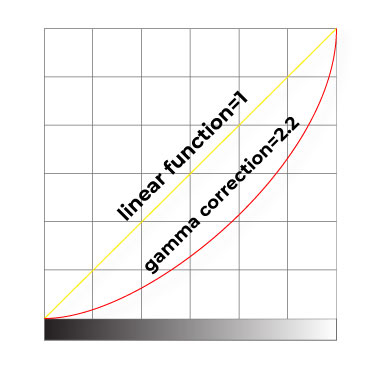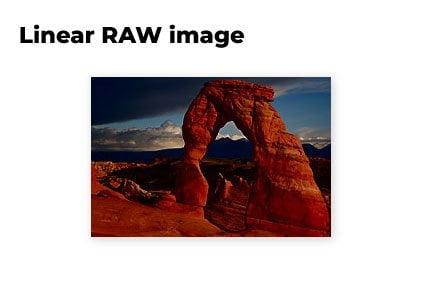This Display 101 article will explain the basics of display gamma correction. To do that we need to show you some background of the gamma correction screen is applied with. It boils down to signal processing behind displaying content on LCD modules.
Curiously enough, we’ll start with human biology. To be exact, the eyes.
The human eye is a complicated organ. It’s worthwhile to know some facts about how the eye processes information. Evolution shaped the modern human eye for thousands of years. There are lots of tricks to achieve the best possible effect. A good example is the fact that our eyes are not very sensitive to changes in the light color areas, but can very easily spot changes in a dark environment.
The difference in light energy emission between the steps (bars) changes constantly from the left to the right.
Does the second image appear more even?
It sure does.
Why?
The answer lies in our eyes. The response of human eyes to light intensity is non-linear. That is why the second image (Fig.2) – where the change follows a power-law relationship – is perceived as more even.
Because of this effect, we need the display gamma transfer.
Gamma encoding, gamma decoding, compression, expansion – what is what?
There are a lot of gamma correction screen-related expressions, so let’s clarify some of them:
- Gamma encoding (also gamma compression) is the process of converting values from linear space to gamma.
- Gamma decoding (also gamma expansion) is reverse from the above-mentioned process. It’s the process of converting values from space to linear.
Look at the plot:
red – display gamma correction
yellow – linear function of brightness
Individual shades of RGB channels do not change by a fixed value, but are displayed according to a curve that is a power function.
If a color is displayed with the yellow (linear) function (see picture above), then many details of the dark areas will be lost. There would also be no way to notice the differences in light colors.
Display gamma correction allows us to adjust hardware to achieve the best visual reception.
Should I worry about the display gamma correction in my project?
We hope that all the physics didn’t turn you away from this topic.
Don’t worry, the display gamma correction is already applied in the LCD controller. So the issue of the image perception is already taken care of.
DISCOVER OUR
Whitepaper
Achieve the perfect user-display interaction with the right Touch Sensor IC. Ever faced issues with phantom touch events or certification? Boost your R&D like a pro with our Whitepaper!








